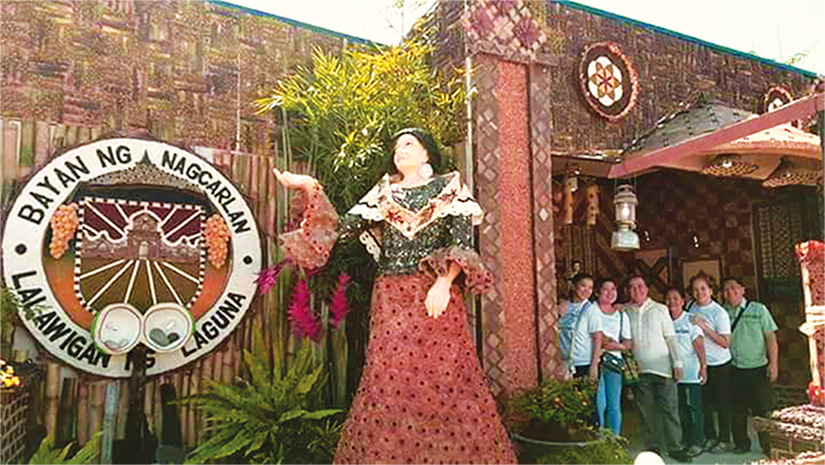
Exploring Nagcarlan, Laguna: A Blend of History, Nature, and Tradition
Nestled in the heart of Laguna Province, Philippines, Nagcarlan is a municipality that seamlessly blends history, natural beauty, and vibrant local culture. Known for its well-preserved heritage sites, serene landscapes, and warm community, Nagcarlan offers visitors a glimpse into the soul of rural Philippines. While it may not be as commercially developed as other towns in Laguna, its charm lies in its authenticity and historical significance, making it a must-visit destination for travelers and history enthusiasts alike.
A Rich Historical Background
Nagcarlan, officially the Municipality of Nagcarlan, was founded in 1578, making it one of the oldest towns in Laguna. Its name is derived from the Tagalog word “nacar,” which refers to a type of hard, durable wood once abundant in the area. The town played a significant role during the Spanish colonial period and was a center of resistance against Spanish rule, earning it a place in Philippine history.
With a population of around 64,000 people (as of the latest census), Nagcarlan spans an area of approximately 79 square kilometers. It is bordered by the municipalities of Liliw to the north, Majayjay to the east, Rizal to the south, and San Pablo City to the west. Agriculture, particularly rice farming and coconut production, forms the backbone of Nagcarlan’s economy, supplemented by small businesses and tourism.
Iconic Landmarks and Heritage Sites
Nagcarlan is best known for its historical landmarks, with the most famous being the Nagcarlan Underground Cemetery. Built in 1845 under the supervision of Spanish friar Vicente Velloc, this unique burial site is the only one of its kind in the Philippines. The cemetery features a chapel above ground and a network of underground crypts, surrounded by thick stone walls. Declared a National Historical Landmark by the National Historical Commission of the Philippines, it attracts history buffs and tourists intrigued by its eerie yet fascinating architecture. Local legends and stories about the cemetery add an element of mystery, making it a popular spot for both day trips and nighttime explorations.
Another notable landmark is the St. Bartholomew Parish Church, a beautiful example of Spanish colonial architecture. Constructed in the 18th century, the church features intricate designs and a serene atmosphere, reflecting the town’s deep religious roots. The church’s annual fiesta, held in August in honor of its patron saint, St. Bartholomew, is a major event that showcases Nagcarlan’s cultural heritage through parades, dances, and religious ceremonies.
Natural Attractions and Outdoor Activities
Beyond its historical sites, Nagcarlan is blessed with stunning natural attractions. The town is home to several rivers, springs, and waterfalls, including the picturesque Tumaway Falls. Surrounded by lush greenery, Tumaway Falls is a favorite spot for locals and tourists seeking a refreshing swim or a peaceful picnic. The cool, clear waters and tranquil setting make it an ideal escape from the hustle and bustle of city life.
The surrounding mountains and hills also offer opportunities for hiking and nature walks. The nearby Mount Banahaw, a sacred mountain shared with neighboring provinces, is a popular destination for spiritual retreats and adventure seekers. Its trails provide breathtaking views of Laguna and beyond, especially during sunrise and sunset.
Cultural Life and Festivals
Nagcarlan’s culture is deeply rooted in tradition, with a strong emphasis on community and faith. The town is known for its skilled artisans, particularly in weaving and pottery, which are passed down through generations. Visitors can purchase locally crafted items as souvenirs, supporting the town’s craftsmen and women.
The Nagcarlan Town Fiesta, celebrated every August, is a vibrant event that highlights the town’s cultural pride. The festivities include street dancing, beauty pageants, and a grand procession, drawing both residents and visitors to celebrate together. The town also hosts smaller festivals throughout the year, such as the harvest festival, which showcases agricultural products and traditional foods.
Getting There and Where to Stay
Nagcarlan is easily accessible from Manila and other parts of Laguna. Travelers can take a bus or van from Manila’s Cubao or Buendia terminals, heading toward Santa Cruz or San Pablo City, and then transfer to a jeepney or tricycle to reach Nagcarlan. The journey from Manila takes about two to three hours, depending on traffic.
Accommodation options in Nagcarlan are primarily guesthouses and homestays, offering a cozy and authentic experience. For those preferring more amenities, nearby towns like San Pablo City or Santa Cruz have hotels and resorts. Many visitors also opt for day trips, returning to larger cities for overnight stays.
Why Visit Nagcarlan?
Nagcarlan, Laguna, is a destination that appeals to a wide range of travelers. History buffs will appreciate its well-preserved colonial landmarks, nature lovers will enjoy its scenic landscapes, and culture enthusiasts will be captivated by its traditions and festivals. The town’s peaceful ambiance, combined with its rich heritage, makes it an ideal spot for those looking to experience the authentic charm of provincial Philippines.
Whether you’re exploring the eerie beauty of the Underground Cemetery, taking a dip in Tumaway Falls, or immersing yourself in the warmth of the local community, Nagcarlan offers a memorable journey into the heart of Laguna’s history and culture.



